NOVEMBER 25, 2021: Usually we wake up and start a new day by packing up the car and moving on to our first destination. This morning, instead of moving on, we decided to spend a few more hours in Castelo de Vide. We really liked this town and there were still a few things here that we wanted to see. To those who think otherwise, and point out that I always push to stay on schedule, note I was flexible enough to change the original plan.
We started by making our way to the castle up at the top of the hill. To our surprise, this was not only a castle, but a small walled village with houses that people live in till today. Our first clue was when a man carrying groceries passed us as we were about to enter through the gate. Groceries – that made me suspect he actually lives there. Sure enough, after passing through three city gates, we reached a small area of houses within the walls. As we wandered down the main street, we saw our most interesting find – a coat of arms above a doorway with what is definitely a Jewish motif – two lions and a menorah. Pretty striking.
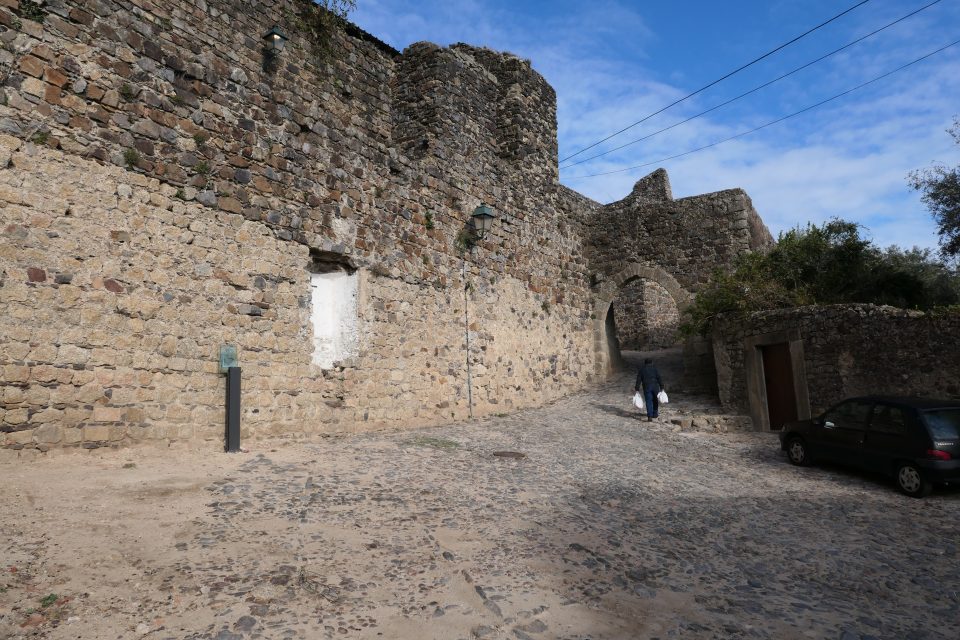
Entering the castle walls with groceries 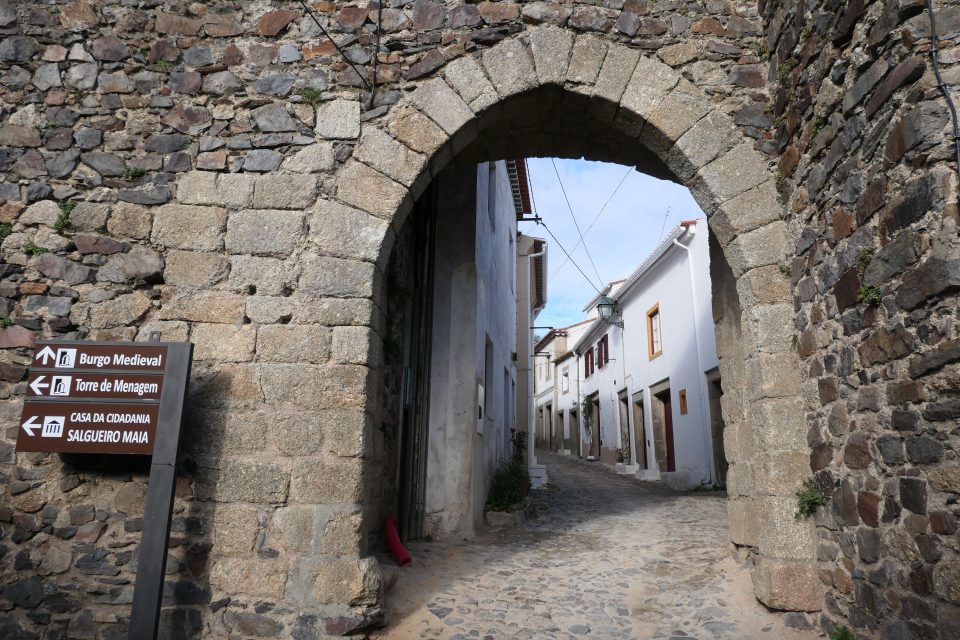
Houses where people still live within the ancient walls 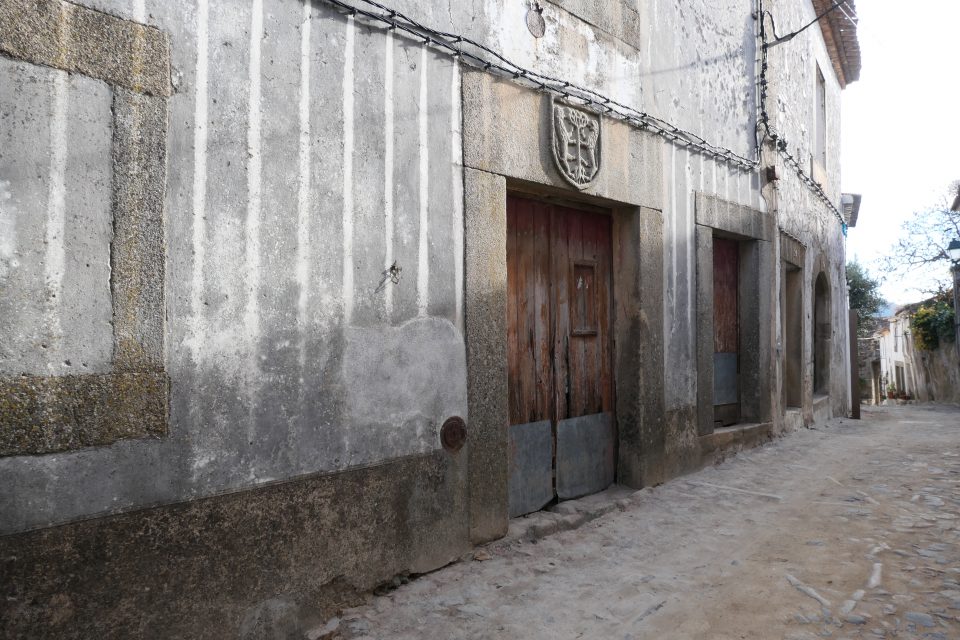
Two lions and a menorah! Wow! 
The views from the castle high up on the hill to the valley below and the mountains beyond, were stunning (I feel like I can start copy-pasting that sentence again and again, it seems to happen a lot).
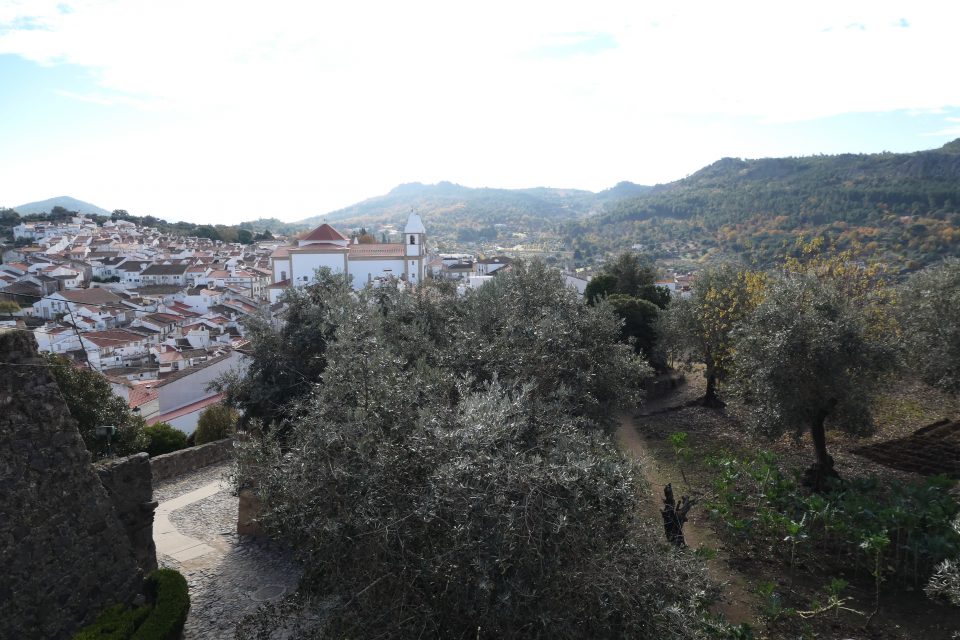
Views from the castle 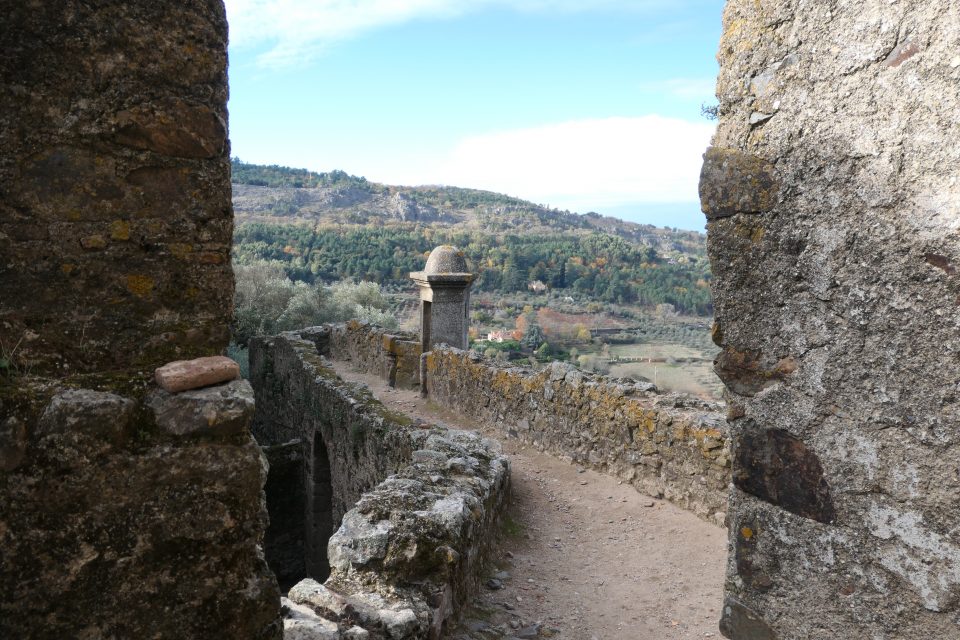
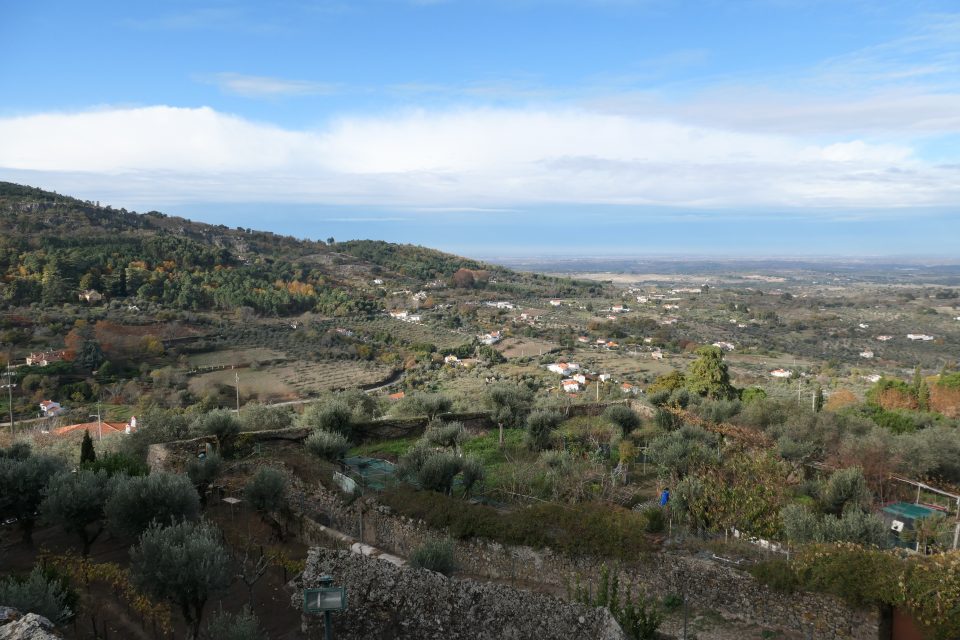
From the castle, we returned to the Jewish area and looked for Casa do Arçário – the Arçário house, a place where the income from tax collections made to the Jews was kept. We found it at the edge of the Jewish quarter. Yesterday we had been on one side of the Jewish area, this was now on the other side and it was well marked with a Jewish star.
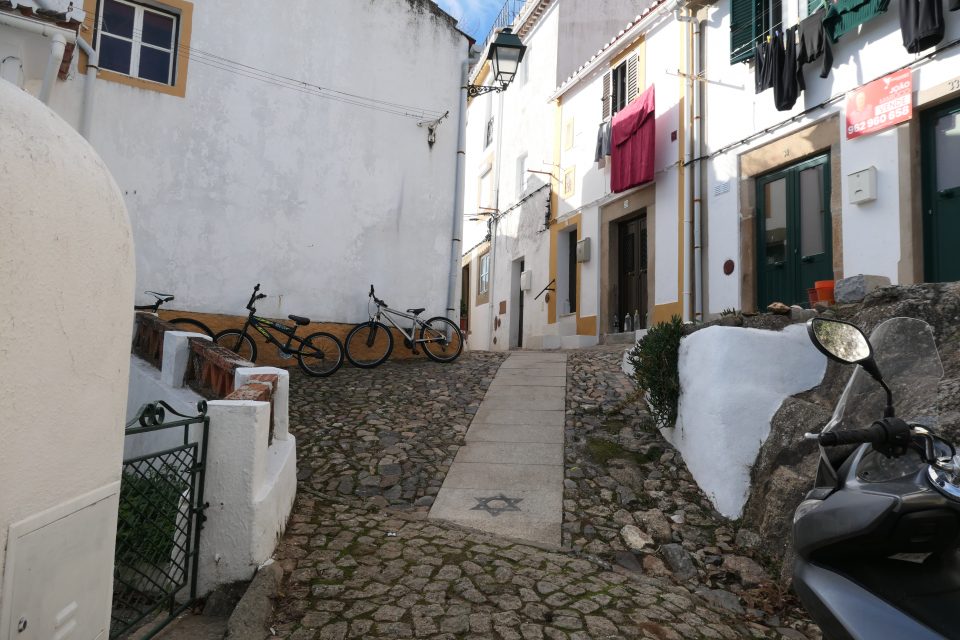
Jewish quarter 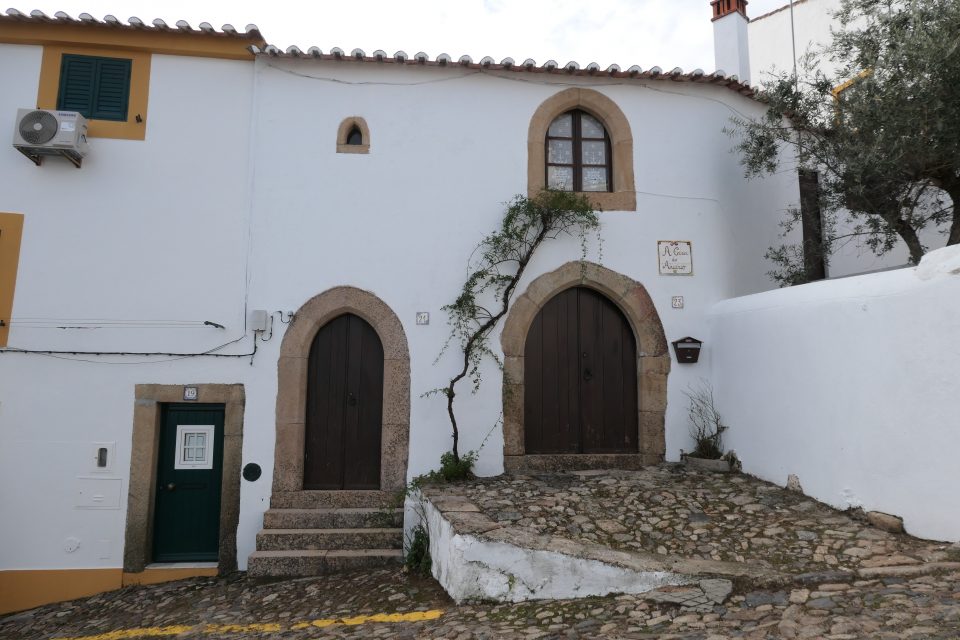
Casa do Arçário 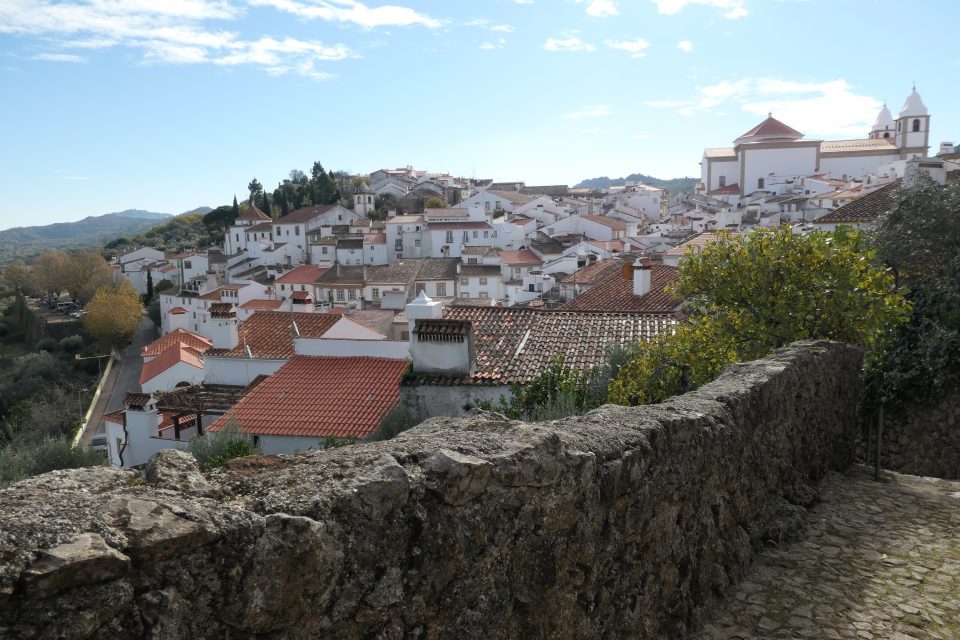
Another view of Castelo de Vide
We also had a photo a doorway with a fish design, thought to also be a Jewish motif. We asked at the Sinagoga, but the clerk at the entrance did not know. Someone outside, heard us asking and pointed us in the right direction – it was next to the fountain we visited yesterday.
In the plaza of the fountain, was a sign to the Garcia de Orta Interpretation Center. We knew something was being built in Castelo de Vide to honor Garcia de Orta, a Jewish physician in the sixteenth century, but the woman in the tourist information never mentioned it. Now that there was a sign pointing to it, we wanted to find it. Nearby a woman on scaffolding was whitewashing her house. I asked if this was the way to the Garcia de Orta Interpretation Center. She answered in a perfect English that she thought it was up that way. Turns out she was from the UK and now lives in Portugal. I was amazed to see a woman working on scaffolding – up to now everyone working in construction here was male. This was her home, and she was in the process of renovating it herself. I hope her renovation turns out better than her instructions, because she steered us in the wrong direction. Not finding it, we asked an old man walking by. He went out of his way and took us there. We went right past the woman on the scaffolding and continued in the opposite direction. When the old man asked us where we are from, he said he knows that he has ancestors that were Jewish long ago. The story we are hearing over and over again in Portugal.
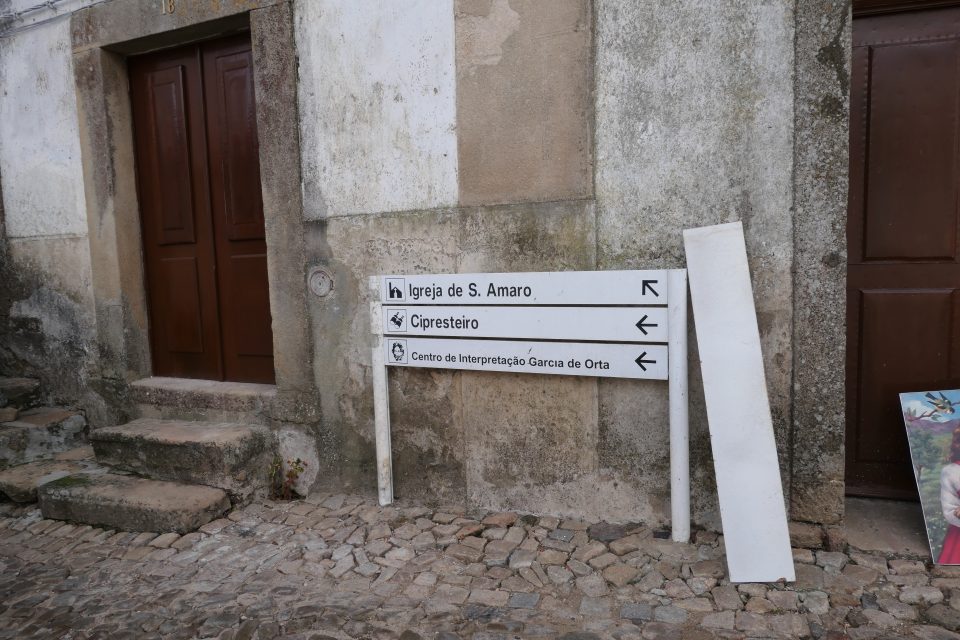
Sign for Garcia de Orta Interpretation Center 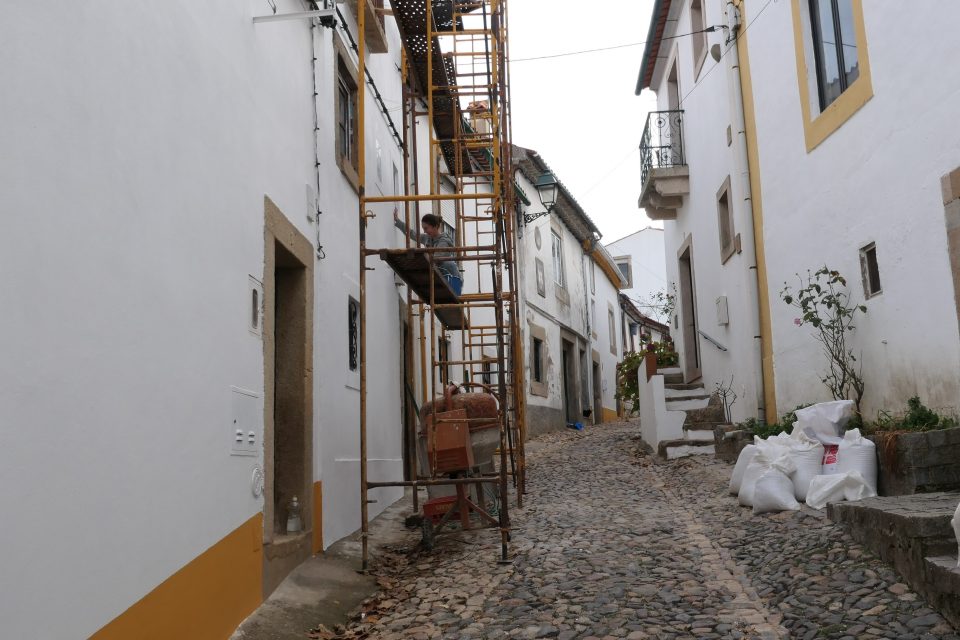
Young woman on scaffolding whitewashing her house
The Garcia de Orta interpretation center only opened two months ago. The building is exquisite, but still mostly empty. Currently there was a photography exhibit in one of the rooms. Aside for a statue of Garcia de Orta, nothing was related to him. If we understood the guard correctly, the place would officially open in December and then there will be more exhibits about Garcia de Orta. I guess since it opened its doors so recently, we can excuse the British woman for not knowing where it was, even though it was located directly behind her house.
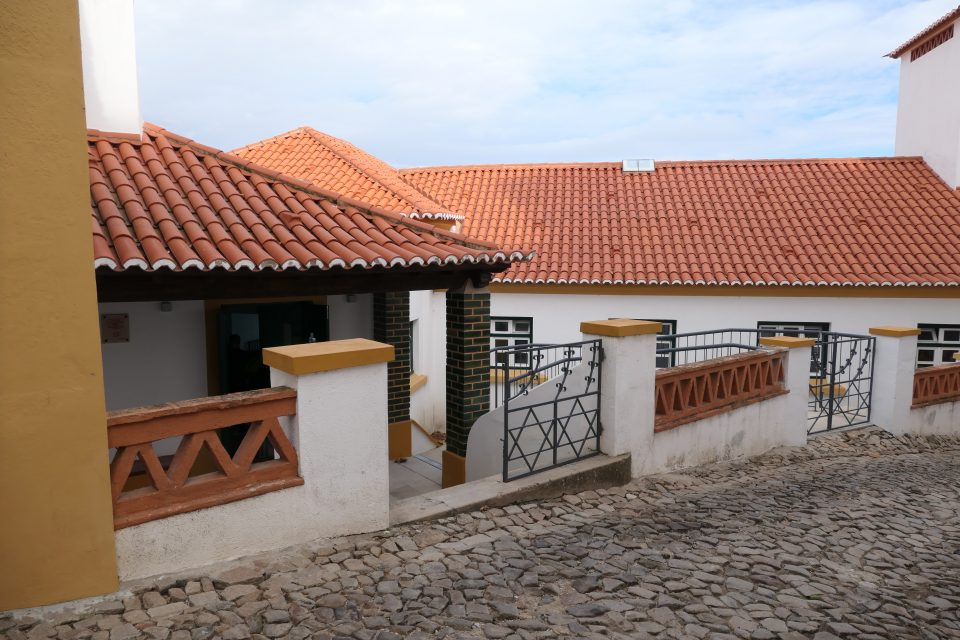
The Gardia de Orta Interpretation Center 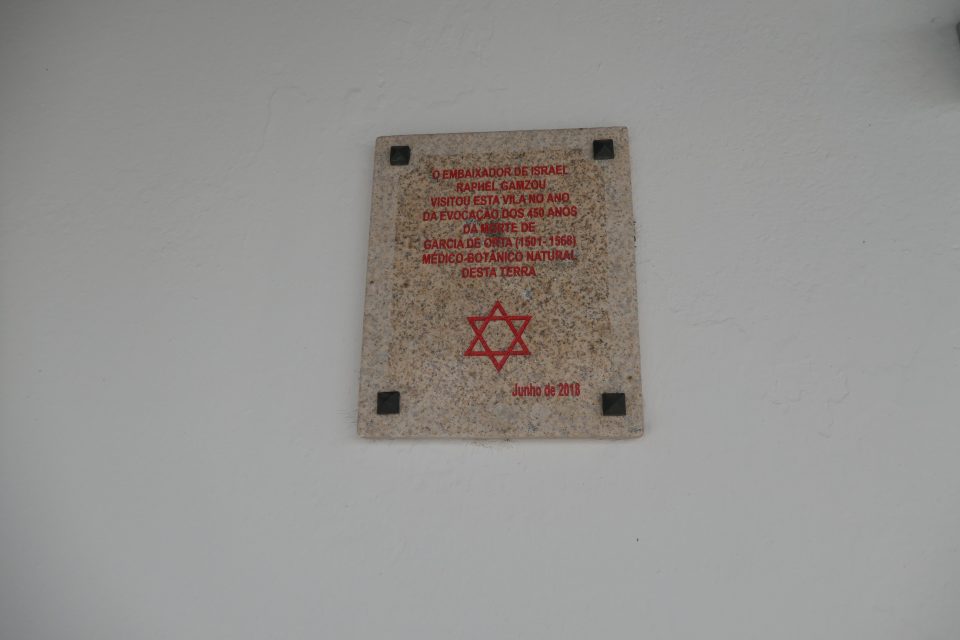

Statue of Garcia de Orta
Although it was sunny when we started out this morning, the weather was turning. The sky was now covered in clouds, and it looked like rain would start soon. We still had another village to visit today, so we decided to return to the car and started driving. The car was parked a bit far away, so I sat on a bench in the main plaza and waited for Mark to pick me up. An old man came and sat beside me. He was mostly toothless, and the few teeth that were left, were rotten and yellow. He started babbling in Portuguese, and when I said English, he gave a big toothless smile. Turns out he used to be the village English teacher and was very happy to have a conversation in English. He let me know he is middle class, has a TV and radio at home, but not a car. He lives in a village 7 km away. He came today to Castle de Vide and used his money to buy a pack of cigarettes. His shoelaces broke, and could I give him money to buy new shoelaces? He rambled on with the same story in different variations for a few more minutes till Mark arrived. Mark gave him a few euros and we were on our way.
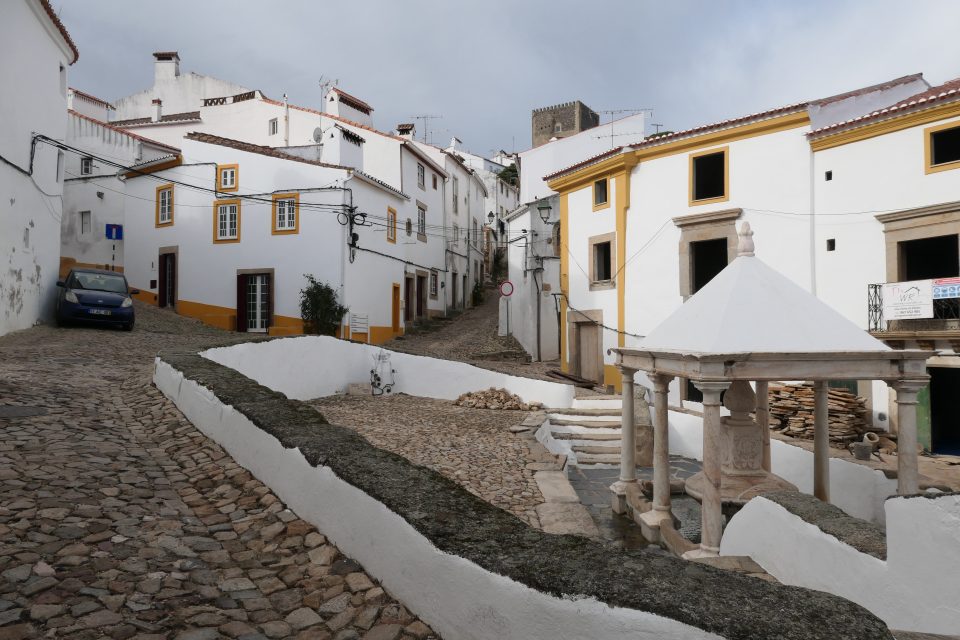
Skies have turned cloudy and gray 
Leaving Castelo de Vide
So far we had met three interesting people, the British woman and two old men, and the most interesting was yet to come.
Marvão is a medieval city 20 minutes away from Castelo de Vide. It is one of two Portuguese villages included in the #1 New York Times bestselling book, 1000 Places to see Before you Die (the other village in Portugal is Estremoz, where we will be tomorrow). We started our visit at the tourist office and asked if there is anything Jewish to see in the area. The answer was a brief no. She gave us a suggested path to walk through the village that would eventually lead us to the castle. We walked through the whitewashed buildings along the narrow cobblestone lanes, and reached the castle. To enter, there was an entrance fee, and as often happens, they ask where you are from for their statistics.
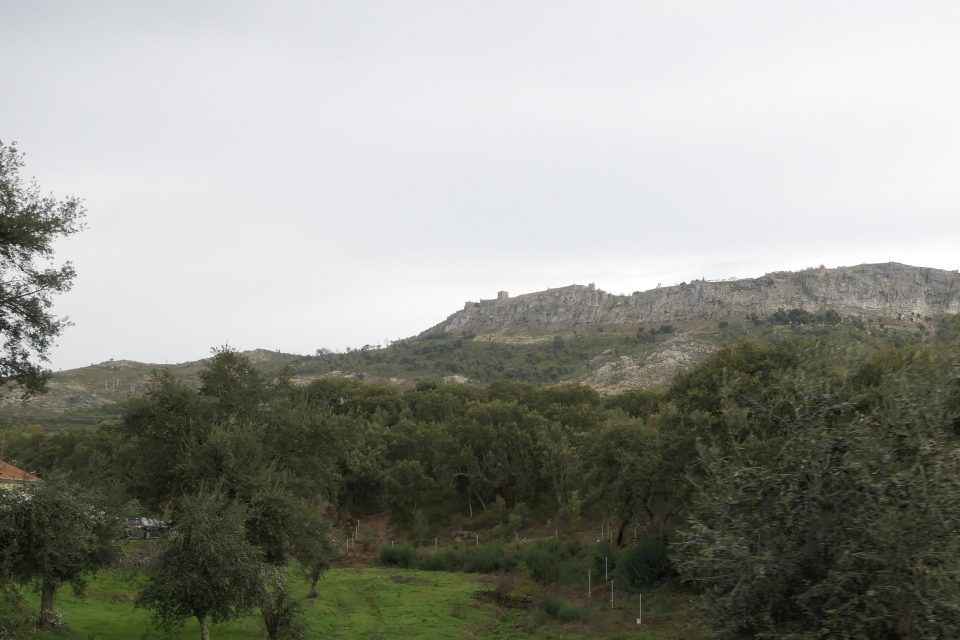
A view of Marvão in the distance up high on the hill 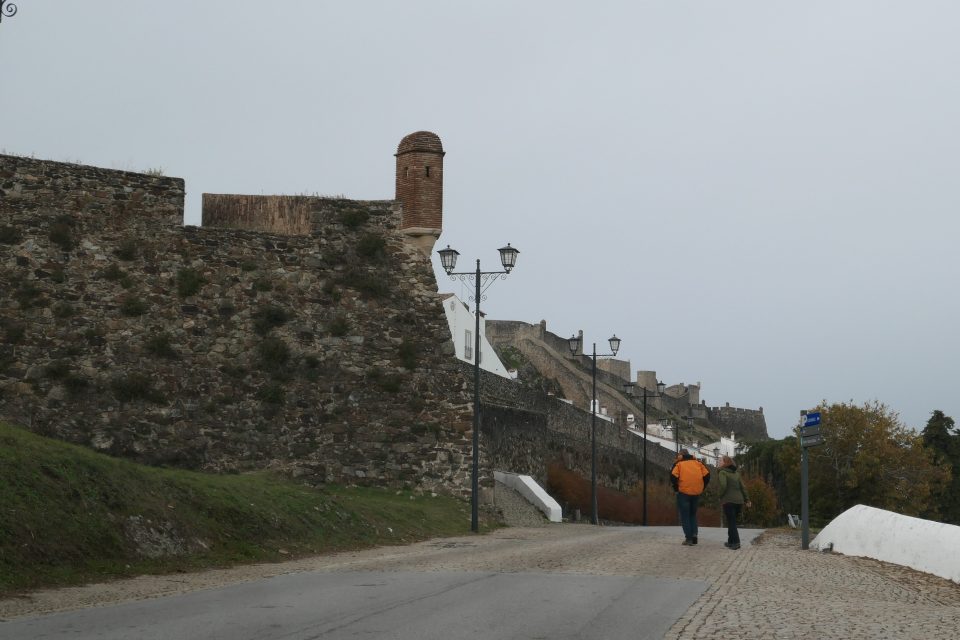
The walls of Marvão 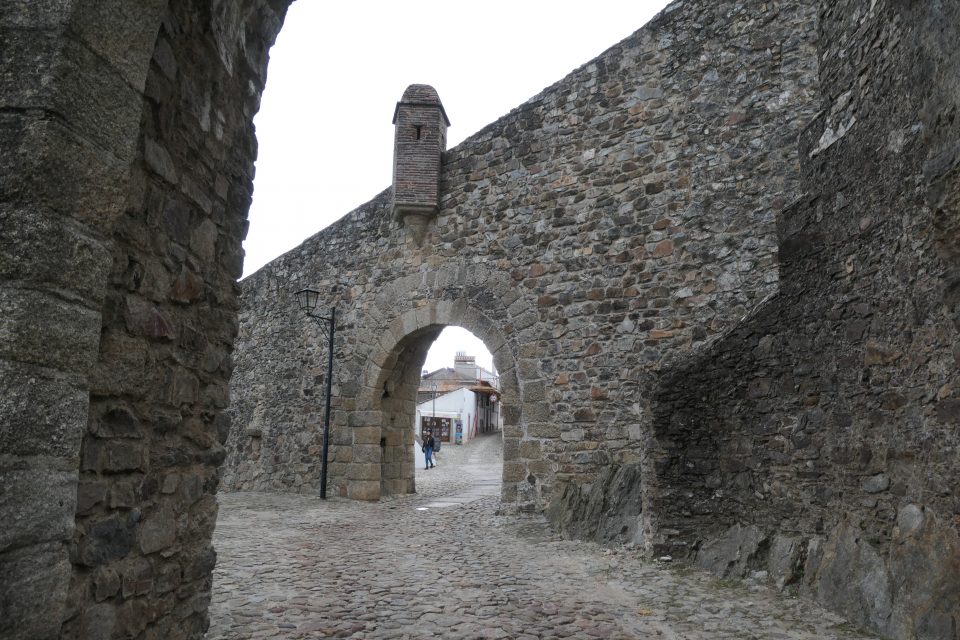
Entering the village 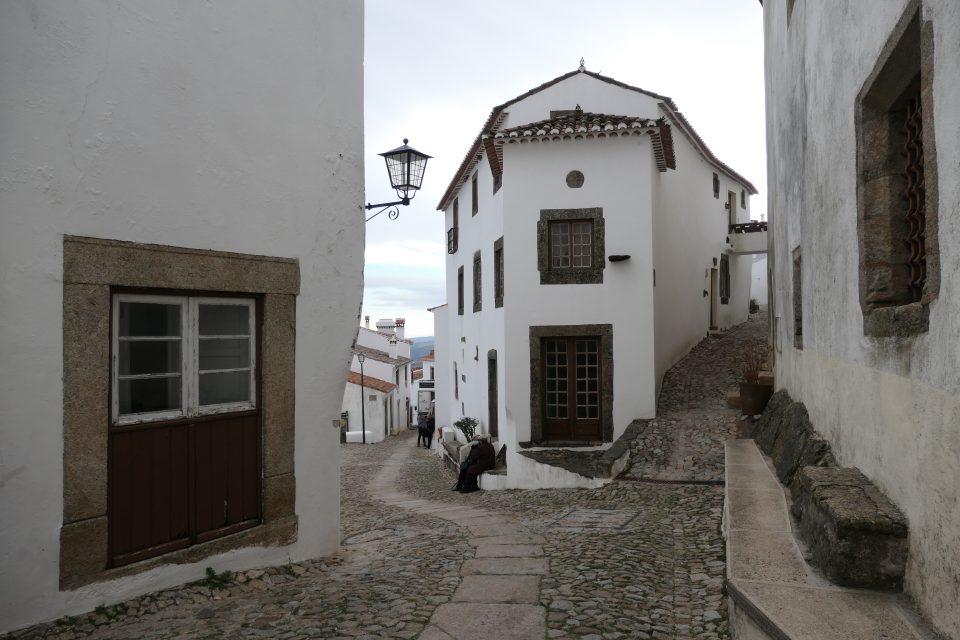
Inside the walls 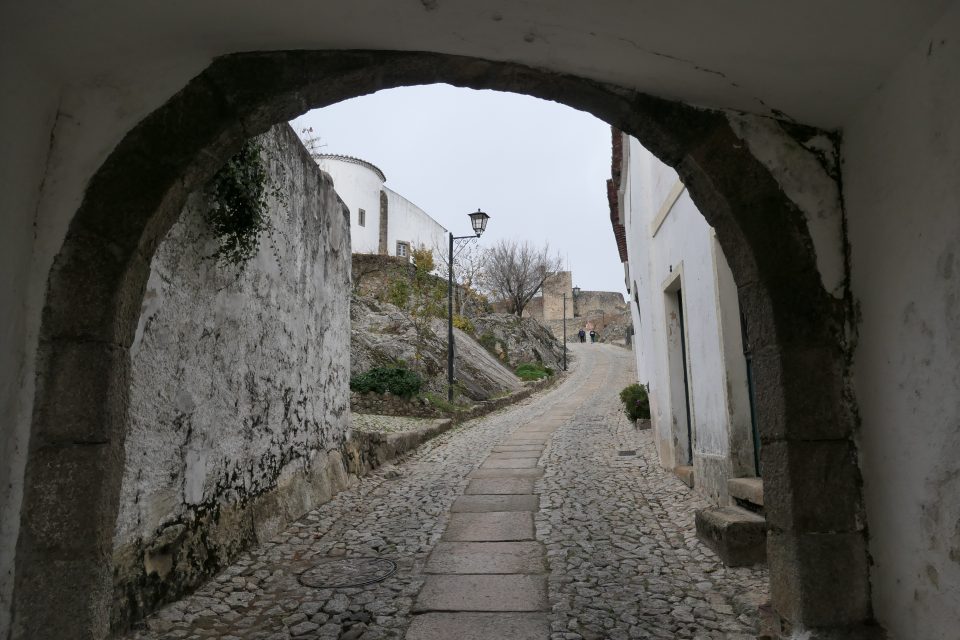
Approaching the castle inside the walled village 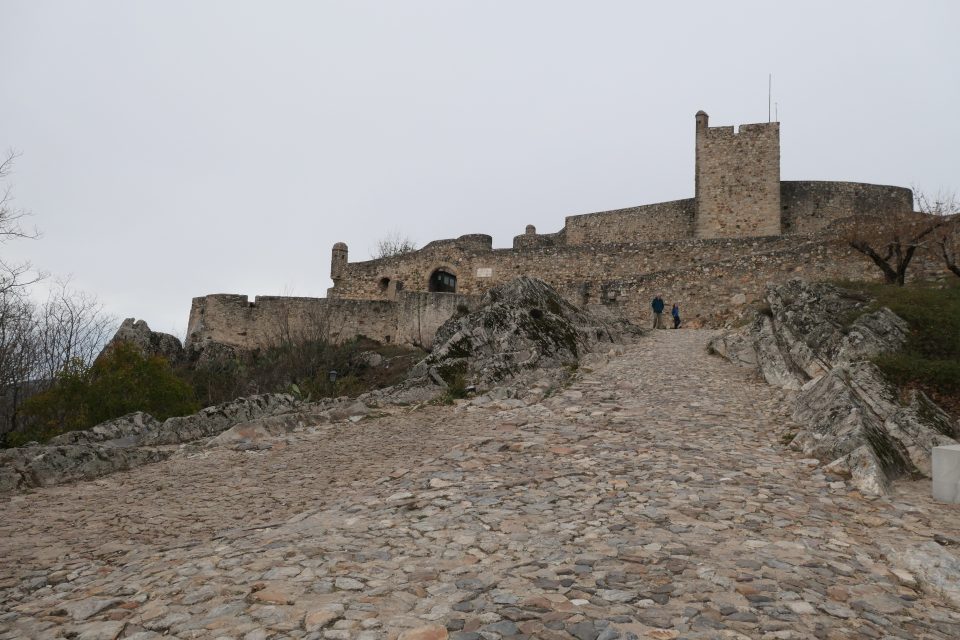
The castle
When we answered we are from Israel, he asked from Tel Aviv? Haifa? Netanya? Mark answered Raanana, and he answered in Hebrew that he is from Kibbutz Afek. And that is how we met Mano (short for Emanuel). He has been living in Portugal for the past seven years and works for the tourist office of the Portuguese government. Our first Hebrew conversation in Portugal!
We bought a combined ticket for the castle and the municipal museum. The museum was going to close soon for siesta, so we went there first. I had read somewhere that in this museum were two Jewish tombstones. The museum, which used to be a church is small, and the tombstones were easy to locate. They both contain a menorah engraved in the rock. As we were about to leave, Mark spotted Mano in the museum and asked if the tombstones were from this area. He said yes, they were found in an archeological dig here. The stones were then sent to Israel for authentication and then returned to the museum. He also told us that recently a ring with a Jewish insert was found in Marvão. It was now in Lisbon to be displayed in the future Jewish Museum there. He showed us a photo of the ring on his phone. It too has a menorah and what seemed to be lulav. Obviously Jewish.
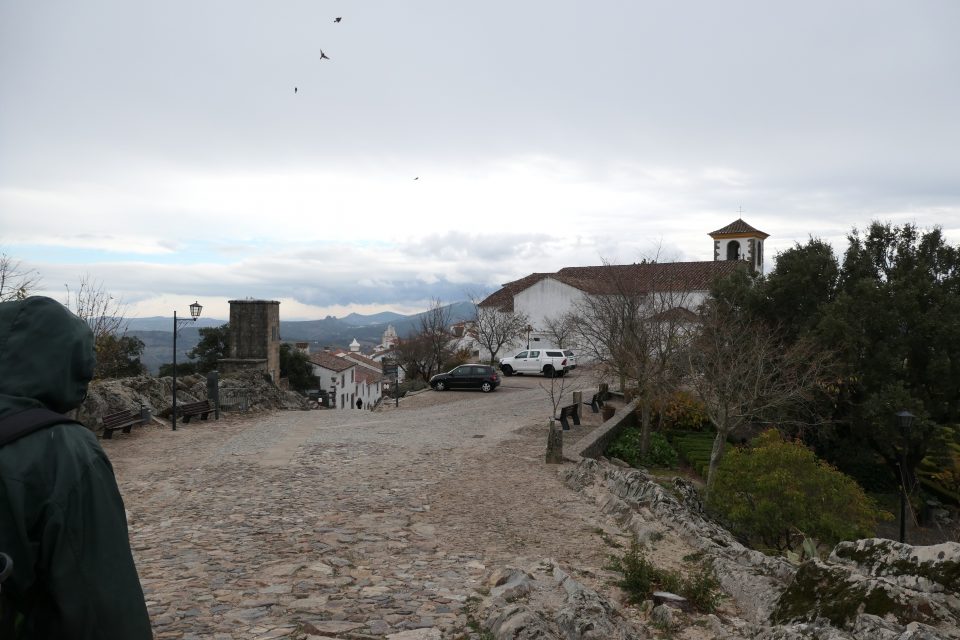
Making our way to the Municipal Museum in Marvão (used to be a church) 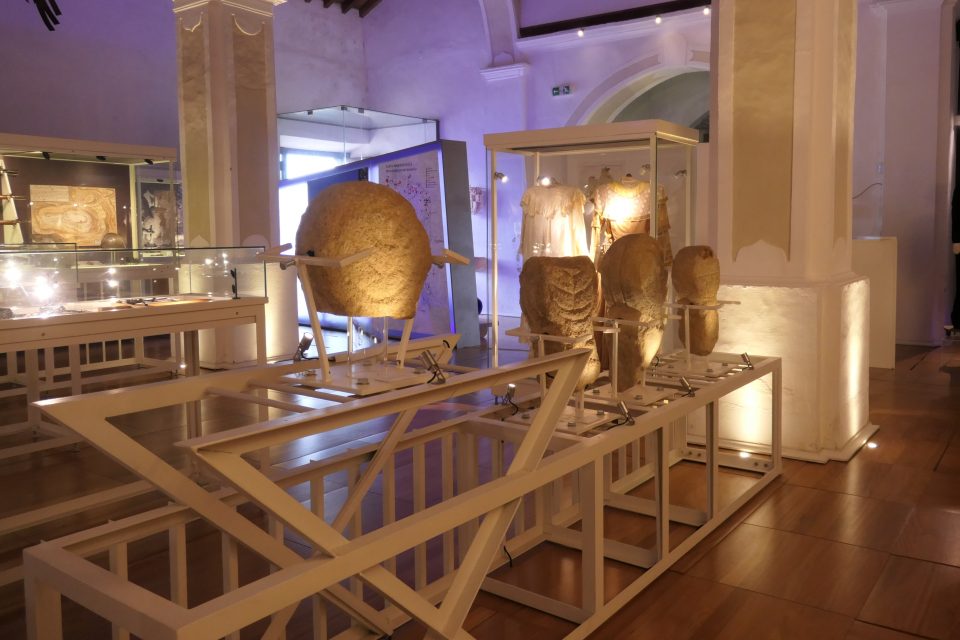
Two tombstones with menorahs in the Municipal Museum in Marvão 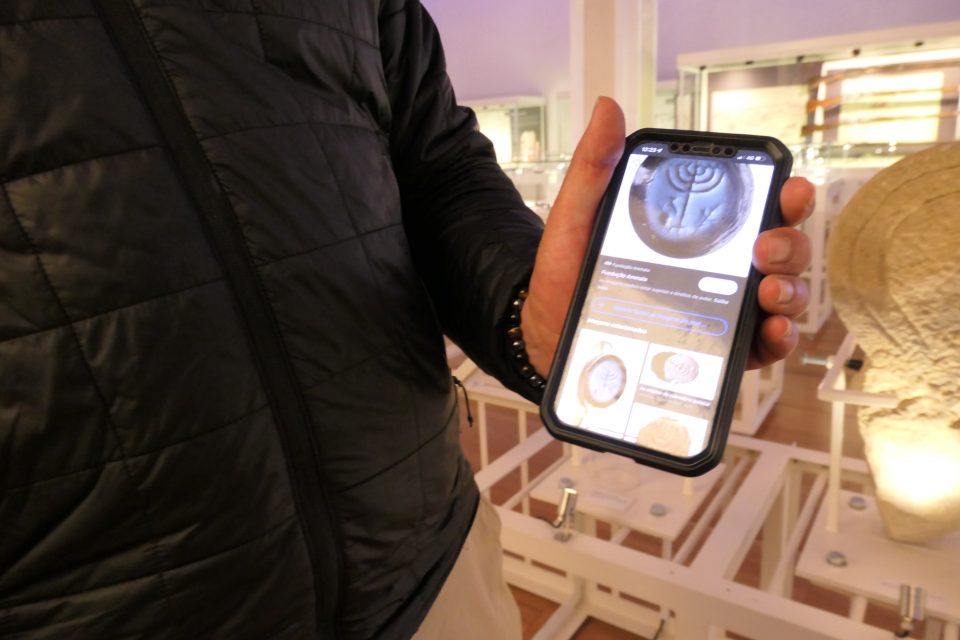
A photo of ring found in Marvão with a menorah shown to us by Mano
We spoke to him for quite a while – he had many interesting things to tell us. One of the projects he is working on, together with the Portuguese tourism ministry, is creating a 160-kilometer hiking route, following one of the routes the Jewish people took when expelled from Spain and came into Portugal. Like the Jewish version of the Camino de Santiago. It will start in Spain, cross into Portugal at the Marvão bridge (our next stop) and end at Castelo de Vide. They are now busy raising funds for this.
I asked him if there is an Israeli community in the area. He said not a community but there are some Israelis. For example, in the nearby mountains an Israeli company is growing medical marijuana. The Portuguese government is open to this, and for the Israeli company it provides a gateway into Europe, and a shorter distance to the USA. He said there are two additional Israeli companies in the area, a cyber security firm, and a company that specializes in setting up smart cities. He said that these companies get much support from the European Union to set up here, plus the municipalities give them great incentives to create jobs to keep the young people from leaving for the big cities.
He accompanied us back to the castle, where we said our good-byes. Mark and I then walked through the large castle grounds, but the weather was turning. As we got to the top of the far tower, the rain started. With one shared umbrella, we made our way back to the car.
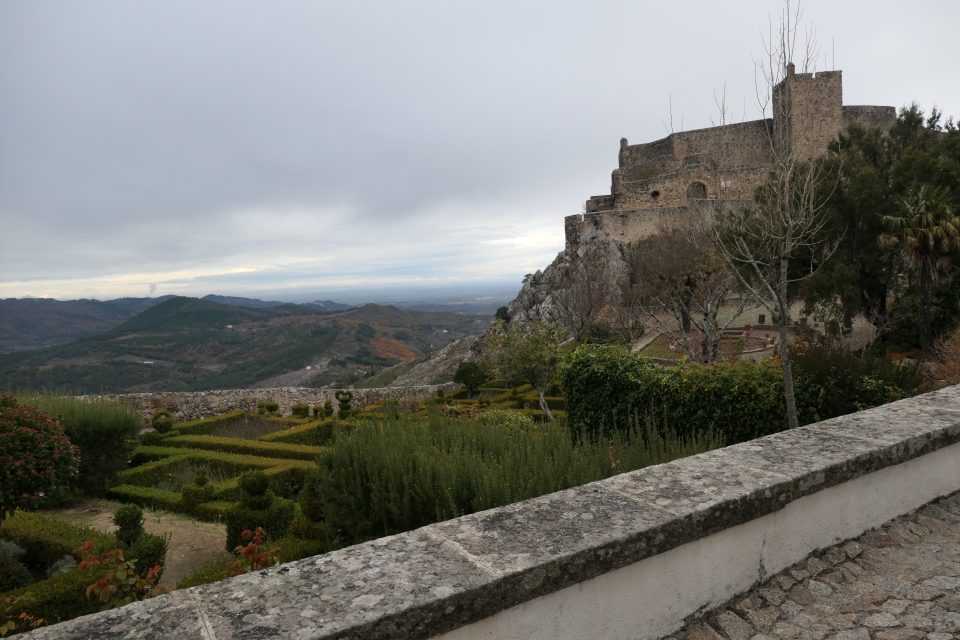
Approaching the castle 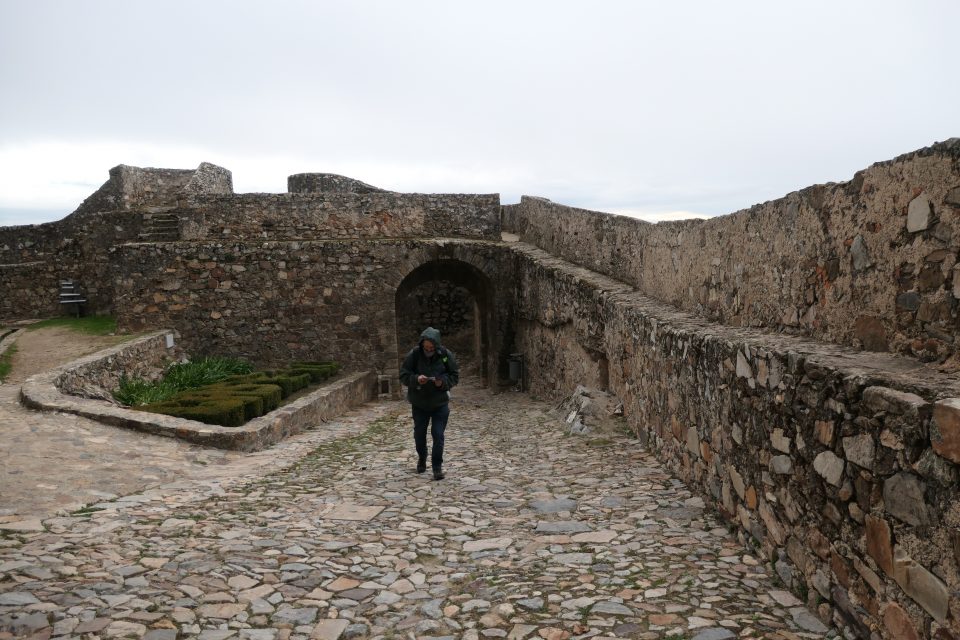
Inside the castle grounds 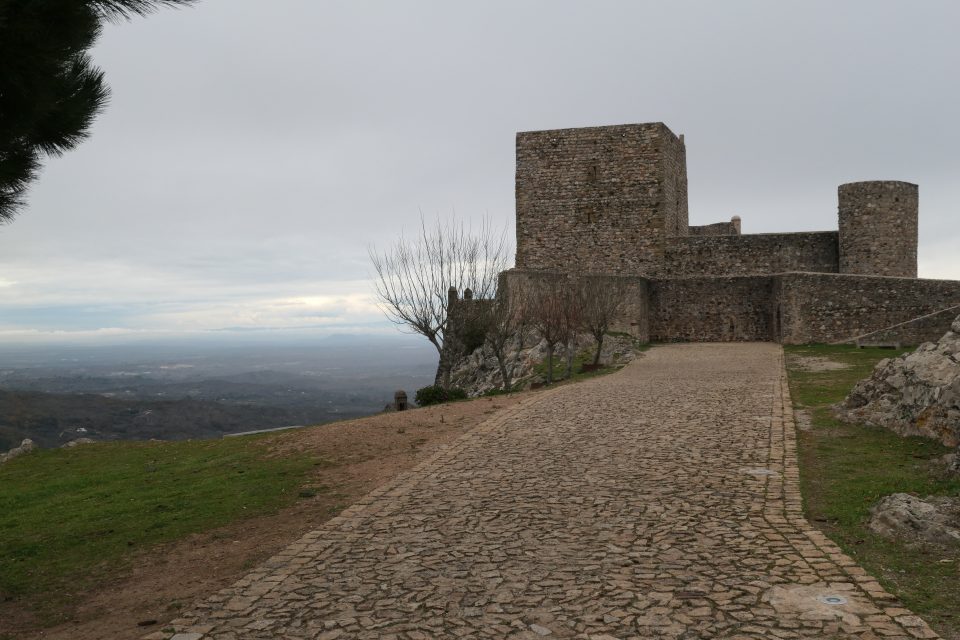
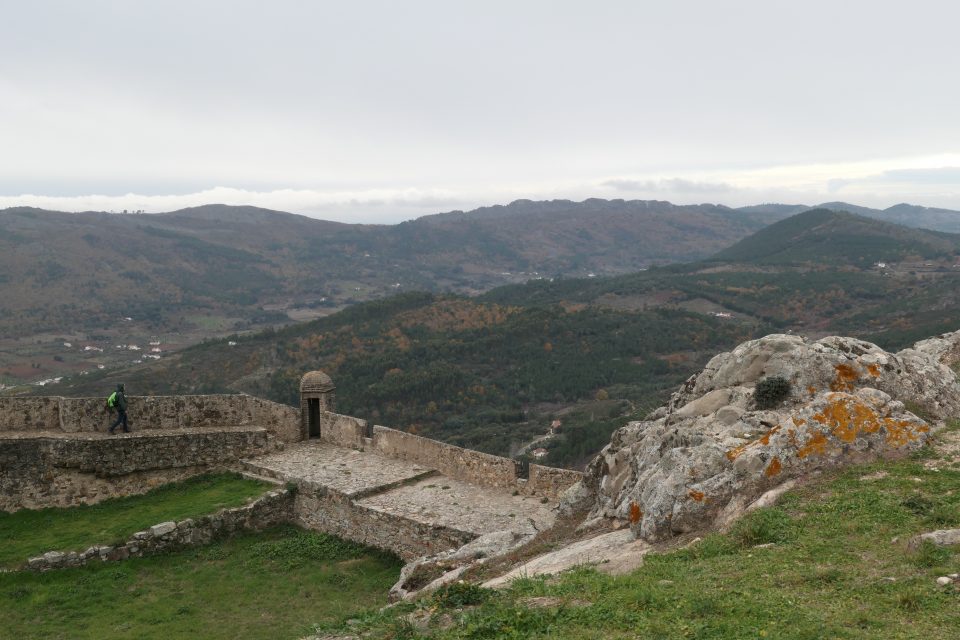
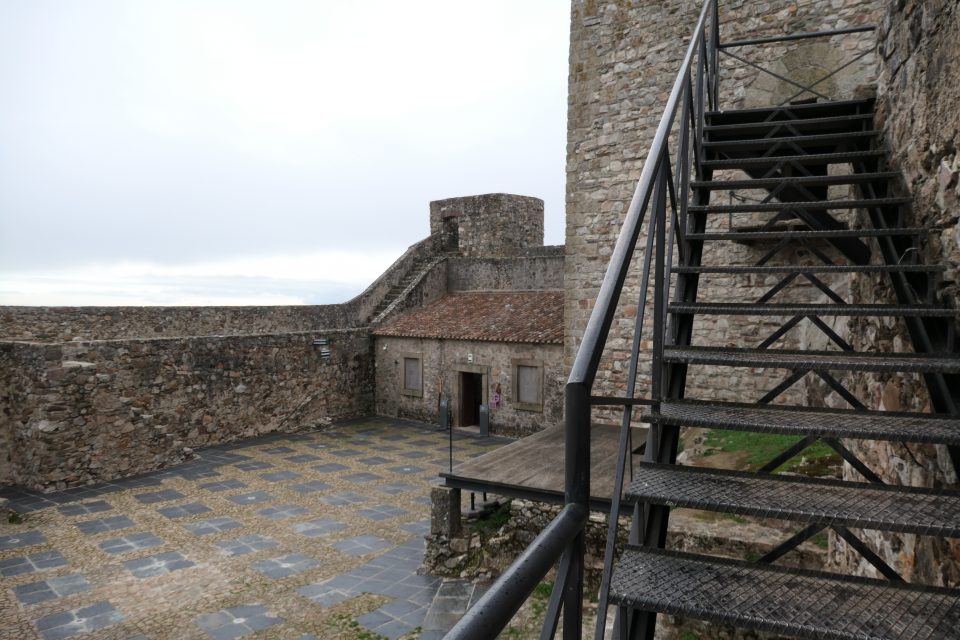
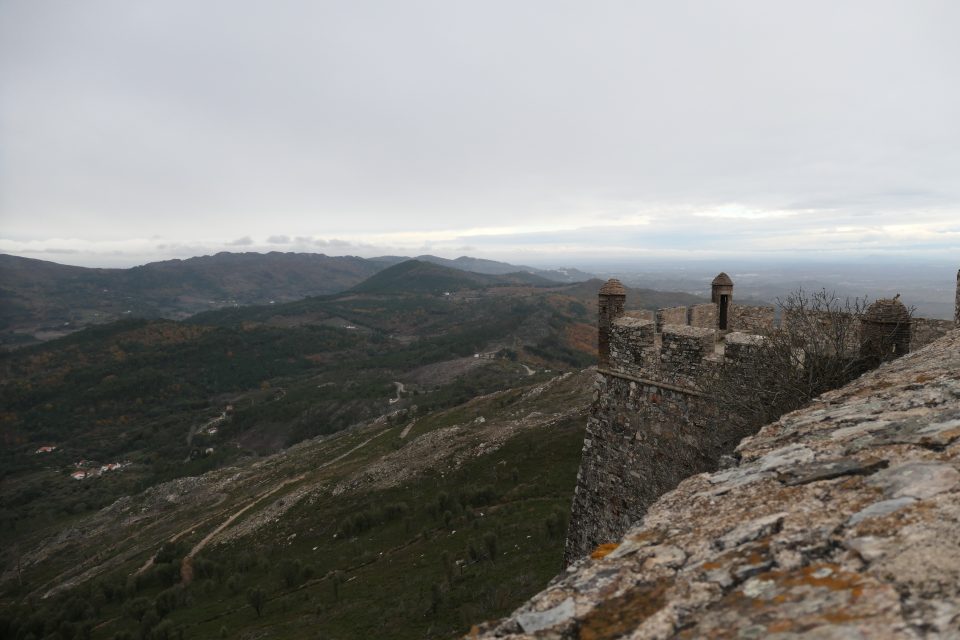
We were parked at the village at the top of the mountain, and we needed to drive to the bottom where a bridge crossed a small river. This bridge, Ponte Romana de Portagem (Roman bridge at Portagem) was once the border of the Roman empire, and it was here that a tax was collected from those who entered. Years later, this bridge was the entryway of the Spanish Jews expelled from Spain into Portugal. It was one of five entry points to the country. On the tower near the bridge, is a plaque commemorating the Jews that crossed here.
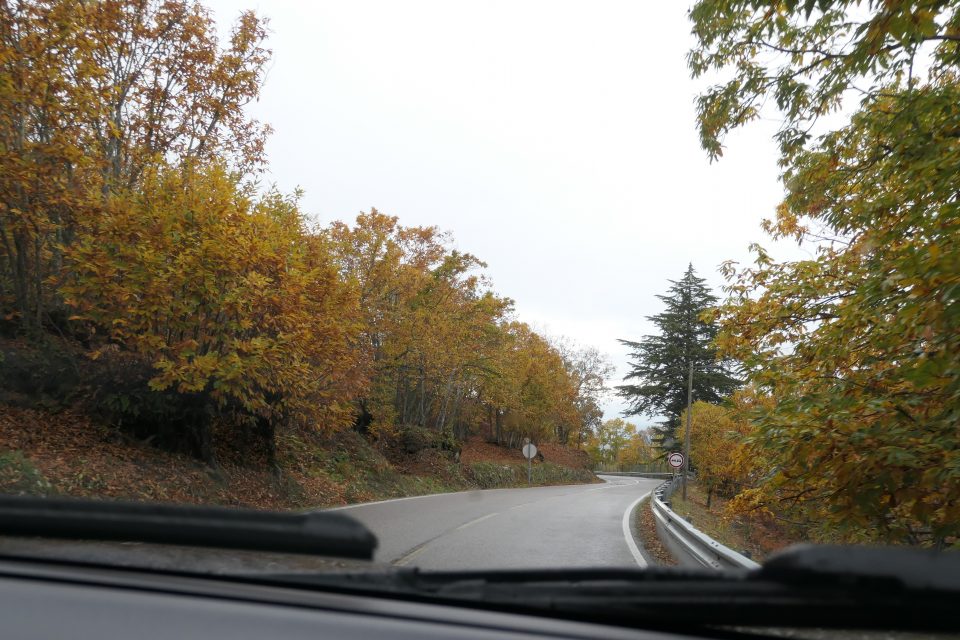
Driving down the mountain from Marvão the fall colors were exquisite 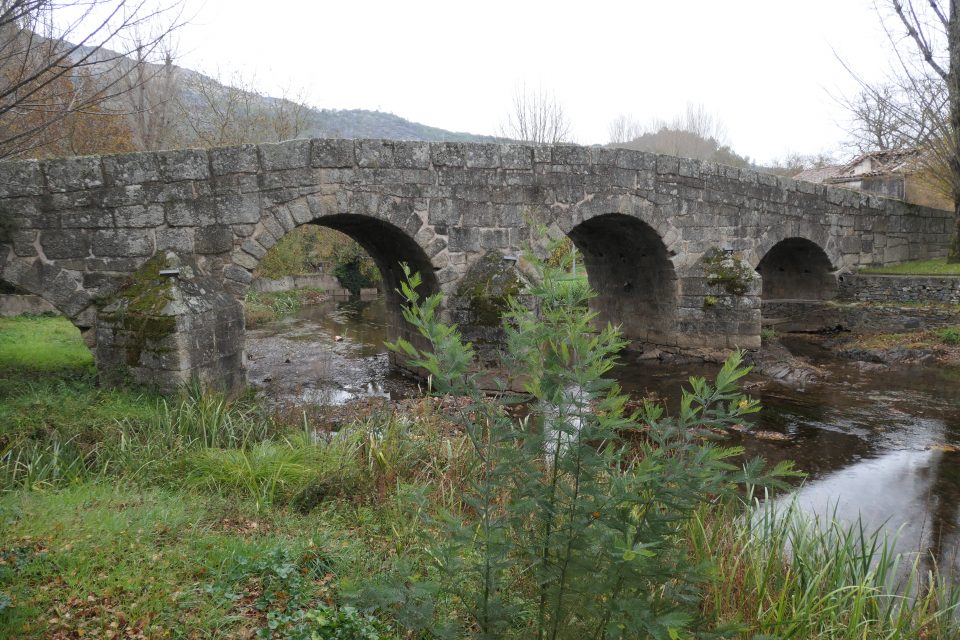
Old Roman bridge in Marvão 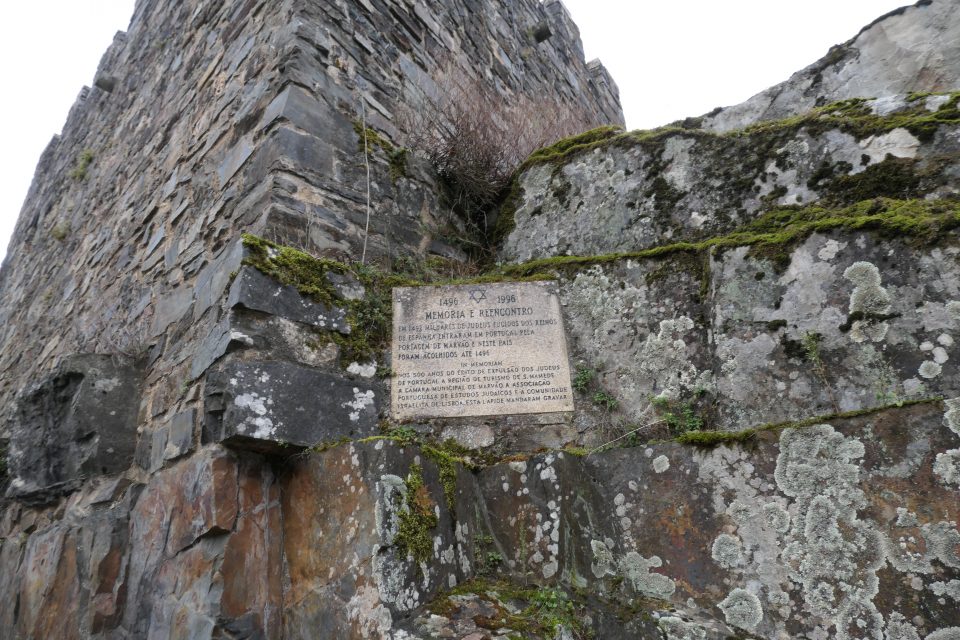
Plaque to commemorate the Jews expelled from Spain who entered Portugal over this bridge
The weather was not good, lightly raining. We had our lunch sandwiches in the car and then started the drive to Elvas, our destination for the night. The road was through many olive and cork tree fields. Yellow flowers blanketed the ground. We were now in an area called Alentejo – land of the great plain. It rained most of the way, usually lightly, but as we entered Elvas it became a real downpour.
At the entrance to Elvas is the most amazing four-story aqueduct. We drove through it and went to the Intermarche for groceries. It was a very large store, reminiscent of Hatzi Hinam back home. To enter the store, you first pass some small stores and a coffee shop, and only then enter the main food shopping. We bought food for the next few days and went into the historic center to check-in to our apartment.
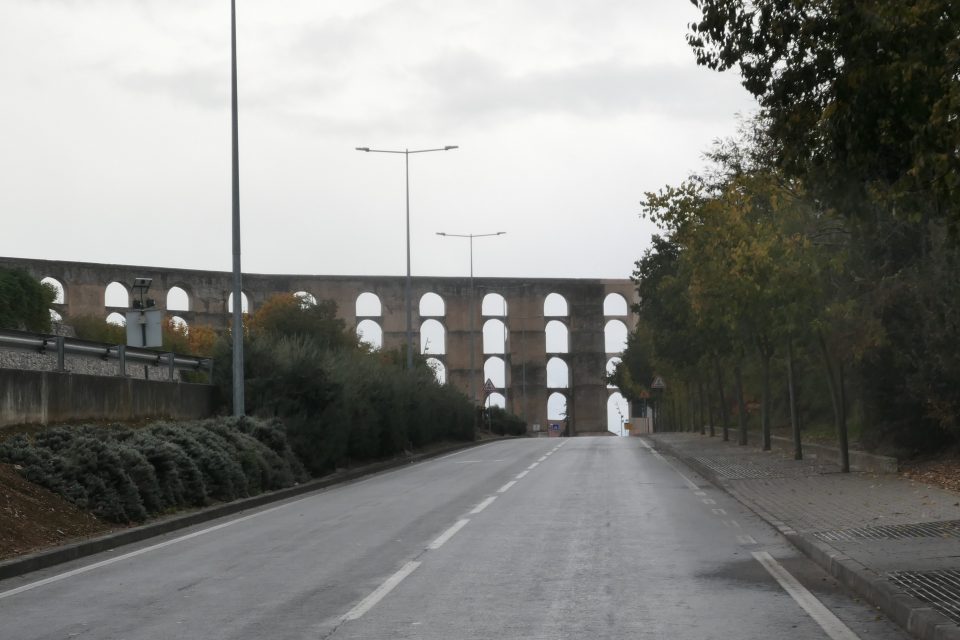
An aqueduct at the entrance to Elvas 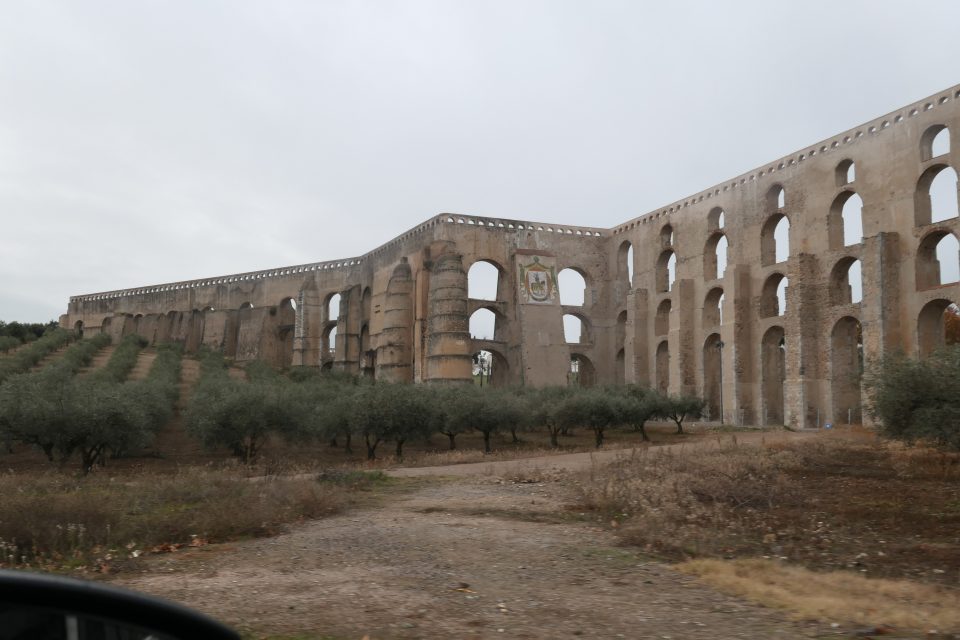
Good night.
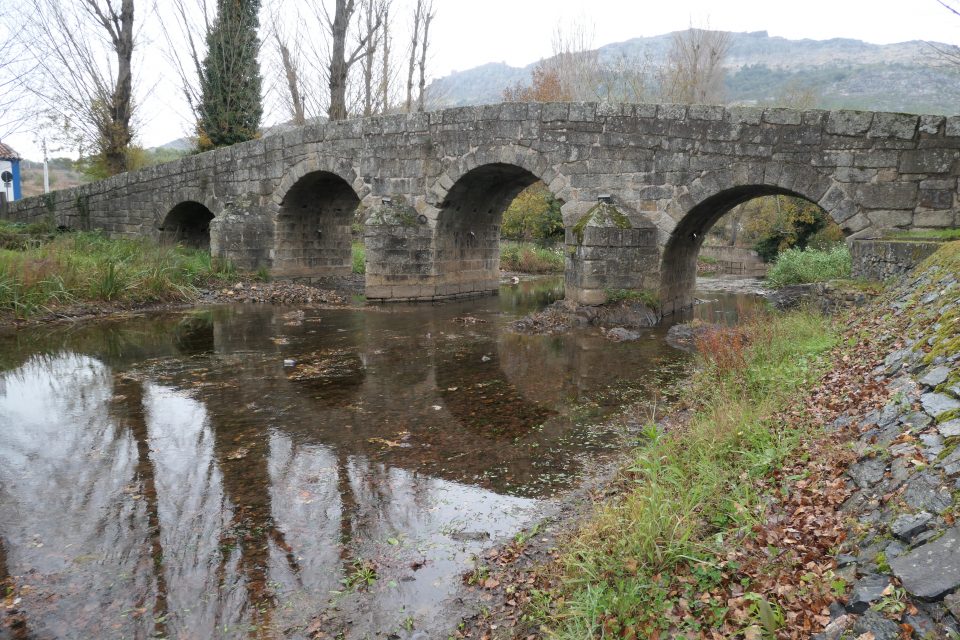
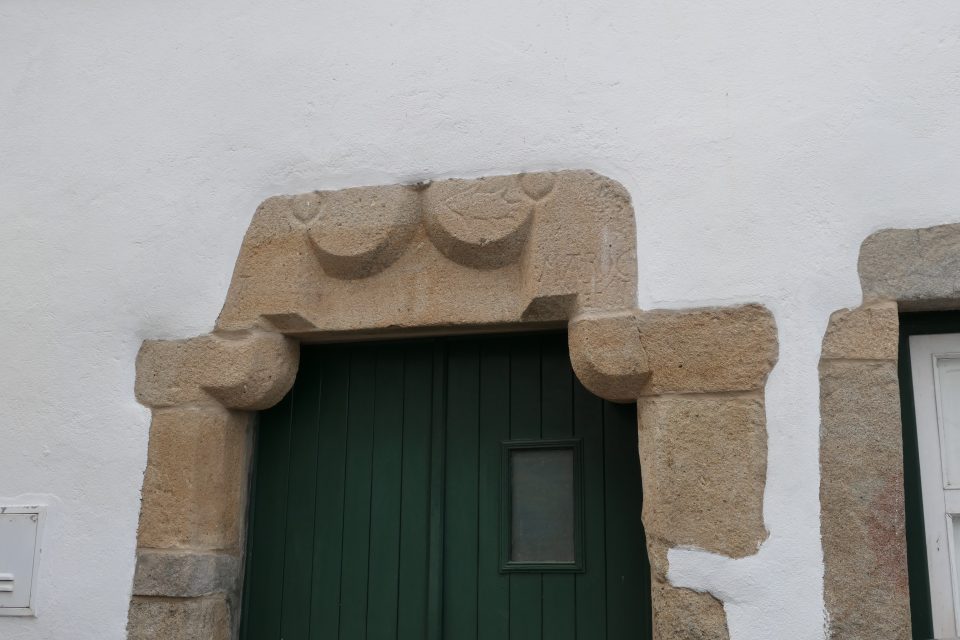
Liked ” I hope her renovation turns out better than her instructions.” You should ignore your schedule more often, it makes you sassy 😀
Did Marvao live up to its description?
Marvao was really marvao-lous even in the rain.